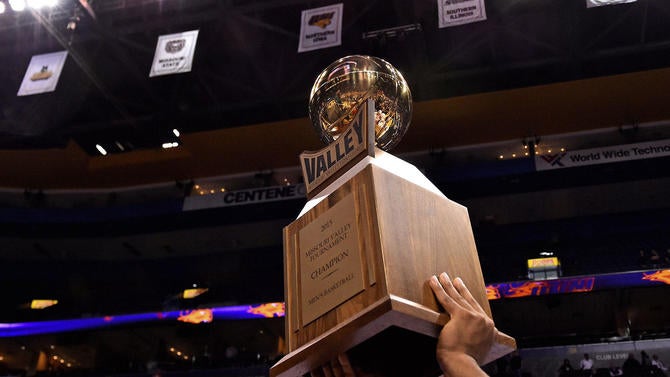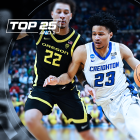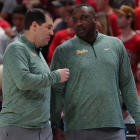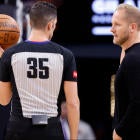Valpo to the Valley is a victory for school and league alike.
The university presidents in the Missouri Valley Conference have done right by their league in salvaging the MVC's stature as best as possible in the wake of losing their most important member, Wichita State. The MVC, in essentially a month's time, narrowed its search and identified the best and most realistic replacement.
The Valley has endured the most detrimental departures in the past half-decade of any non-power conference. It's lost its two most important programs -- Creighton's understandable lure to the Big East in 2013 was the first big hit. This time around, pegging Valpo provides a more prominent replacement than Loyola-Chicago getting the nod after losing Creighton (no offense to Loyola, but this is indisputably true). This was a critical move for the long-term viability of the Missouri Valley as a potential/occasional two-bid league in the years to come.
Here's the reality: The Valley has been malleable for much of its existence. The league has been around for 110 years and in that time had 34 different members, a surprising figure for sure. (Only the Southern Conference has gone through more turnover.) For all of its charm and sporadic March success, the Missouri Valley's persisting legacy should be its adaptability. Valparaiso makes for a nice marriage, a beneficial union for both league and school, and ushers in a tweaked, if not slightly (and undeniably) downgraded era for the MVC.
"I think we've made a decision that is the best for the Missouri Valley right now in terms of keeping us relevant and competitive and the strength of our league," league commissioner Doug Elgin told me.
Fittingly, Valparaiso has proven to be as flexible over the decades as its new host conference. The school went to Division I in men's basketball in the late 1970s, and since then has managed consistency through four stages: independence, then to the Mid-Continent (which would become the Summit League), followed by the Horizon League and now the MVC.
Plus, consider that few mid-major programs have national brand value. Valpo is on the short list, be it because of the memorable name (the Gonzaga factor), an all-time NCAA Tournament moment (Bryce Drew's buzzer-beater really is one of the five most memorable March shots ever) and relatively consistent Big Dance appearances (nine since 1996, something only a handful of mid-major programs can equal or better).
What else went into the discussion, and why Valpo? Its academic standing and location in Indiana absolutely were significant factors, right alongside the prominence of its men's basketball program.
"Keeping the footprint as tight as possible," Elgin said. "You find all efficiencies -- economy and reduction of missed class time -- is part of that consideration. Other conferences have stretched their footprint to a ridiculous degree and we felt that one of our strengths has always been that we have regional rivalries and a traversable footprint that, for the most part, can accomplish travel by ground transpiration, not charter. … One of the strengths we have as a league is we're a Midwestern league and have a footprint that is respectful of student-athletes that have to travel that."
With that in mind, here's to hoping that the league presidents in the Missouri Valley can accept the bucket of praise handed to them over the past day and let things stay as is. Because, although coaches in the league want to stay at 10, there is still ongoing analysis as to whether a 12-team Valley model would be better. More teams brings more inventory and more money, but what cost would it come at, and is the Valley assured to up its standing by adding two more teams?
Not at all, and not when you look at where those teams might come from. For the MVC, 12 is a gamble.
Elgin, who has been with the Valley for three decades, is deeply passionate about the membership and the geographical aspect of the league. Across all sports, he feels as though the close-quartered union has helped keep the league stable and successful in multiple sports since the late 1990s. He did not indicate there was a likelihood that 12 teams would be in the MVC's future, be he also did not remove that possibility. (Eleven, however, is a non-starter. It will either be 10 or 12.)
"We went into this process certainly with the possibility of going to a 12-team model, and we still keep that door open," Elgin said. "As we announced, there is a presidentially led initiative that's going to continue to examine the possibility of future expansion. If at such time there's an opportunity to expand with two new member institutions, we would do that."
To get an understanding about how an 11th and 12 team could be added, Elgin explained more of the mindset behind Valpo winning out and why academics is now even more of an emphasis.

"Obviously we're thinking about the financial support that's provided by the campus," Elgin said. "We wanted to make sure they're funding athletics appropriately. Academics, in general, is important. Reputation is a part of it. Not that we went looking for a private school necessarily, that's not it at all, but when you see there's an academic enhancement program coming in 2019-2020, that's going to be an important revenue stream. The stronger your academics, the more units you can earn. We looked at academic performance data, broad-based programs."
Plus, Valpo sponsors every team sport offered in the MVC. That's not a necessity for future potential expansion/realignment candidates, but it absolutely bolsters a school's chances. Men's basketball also must have either a proven tradition or is fully invested and has local support to back it.
"Valpo is an established brand," Elgin said. "Obviously people understand how strong their men's basketball program has been. Overall athletic budgeting, quality of facilities. We were very positively impressed at the institutions we visited. I say that very openly and very honestly. Valparaiso, I think, was an institution we thought was ready for participation and competition in our league. They are familiar to our schools. We've had Missouri State, Indiana State and Drake play them in recent years. Attendance, they have a passionate fan base there. ... It's close enough to other institutions where it can be a travel partner."
Now, the Missouri Valley is for certain only going to be at 10 in the coming year. Meantime, other schools that were seriously in contention along with Valpo (that would be: Milwaukee, Omaha and Murray State) wouldn't necessarily have a head start in the talk for 12. Elgin was specific to note that the process upcoming to look at 12 would include a reboot on all potential candidates. Schools that weren't prominently vetted this time around might get a closer look if they are geographically paired with another school.
"Geography is important," Elgin said. "You tend to look in the neighborhood."
League presidents and commissioners have, to a certain extent, made decisions on expansion that haven't necessarily been out-and-out winning decisions in football and/or basketball. Bigger does not equate to better, though it sometimes can. Then you look at the 10-team Big East and Big 12, and check how those leagues have fared in basketball over the past four years, and both are top-four in metric performance.
Elgin is acutely aware of this. Hopefully the league presidents are as well. The Valley needs to be most concerned with how it can best adapt to upcoming updated criteria for NCAA Tournament selection and seeding, rather than thinking that more teams will bring more bids. That might not be the case. Plus, remember that Valpo's selection was based in some part on its tournament appearances. If the Valley is looking for two more, there are no two schools that are obtainable and have consistency in winning their leagues. (Belmont, which would be a great addition alongside a Murray State, is satisfied with remaining in the Ohio Valley Conference, I'm told.)
The coaches, and plenty of ADs, are against a 12-team model. The Valley isn't ripe to be plucked again. Though conference realignment is cyclical in college athletics, Creighton and Wichita State were clearly a cut above the rest of the league. The 10-team union that's set to cement in July could be locked together for decades to come.
"I think coaches' views are important as part of an overall league consideration," Elgin said. "They don't guide the decisions but they certainly influence it. Those are my views, you have to take into the consideration the differences in strength of schedule when you talk about 12 programs. In talking men's and women's basketball, you're not going to play 22 league games. You look at other conferences that has more than 10 members, the Atlantic 10 for instance, that is certainly a model conference for this outside the Power Five in securing multiple at-large bids year after year. You also don't want to take members into the conference that don't have a positive impact on your real strengths."
There is a benefit to the Valley having its championship game on CBS, a true national audience, the week before Selection Sunday. The league schedule isn't a cram. Ten teams seems to make the most sense, but the presidents will ultimately be the ones to make the financial decision on this. It can be hard to resist going back for more, but what's most important here is to know that you can't replace Wichita State with just one school -- and thinking you can do it with three is even more misguided.





















